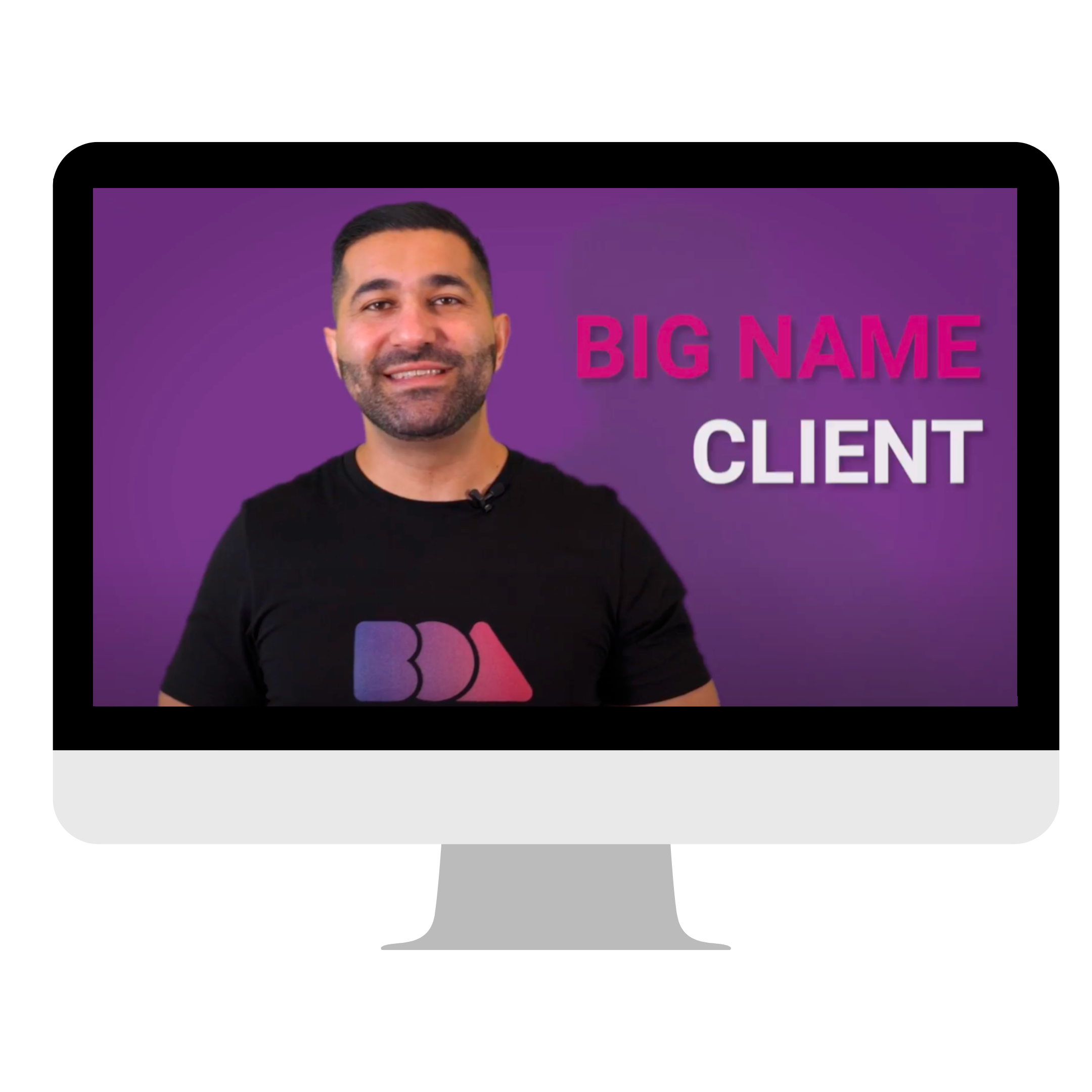Learning How to Start an Animation Studio From Scratch
The animation industry is one that has a bright future ahead, and it’s showing no signs of slowing down any time soon. Creating animations is far more accessible today than it was in the past, just as queuing in cafes to access the internet is now history.
As the animation industry evolves, the global demand for animated content shows steady growth, with some segments growing 2-3% every year. Awesome, right?

GIF via GIPHY
With this comes a stream of endless opportunities for anyone and everyone - such as learning how to animate or even how to start an animation studio.
Think of it this way. You were interested enough in animation to click on this article. You already possess the traits that make an extraordinary animator, but now what?
What do you do with these interests and traits? Do you establish a freelance career in animation? Should you start an animation studio? Where do you even begin?
This blog post explains how to start an animation studio, from determining whether or not running an animation studio is a good fit for you, to taking the first steps towards creating your animation studio, to what you need in order to attract clients to your business.
Surely, a large client base is one of the main goals of every business, and with a large client base comes profit.
Working as a Freelancer vs Becoming an Animation Studio Owner
Before getting to the part on how to start an animation studio, let’s clear up the difference between an animation studio owner and a freelance animator. You don’t need to assign a title to yourself right away, as you can figure out what path you want to take down the line.
These two careers have similar steps in the beginning but may end in different destinations.
As a freelance animator, starting an animation studio doesn’t have to mean you hire a team right away, or even at all! Being a freelance animator comes with the flexibility and freedom of being your own boss. You’re in charge of the direction your animation business takes.
On the other hand, you can start as a freelancer and eventually grow your business into an animation studio with a dedicated team. Owning a studio has its perks, such as allowing the flexibility for more free time, since you’ll have a team to help do the work.
To How to Start an Animation Studio With The Right Mindset
Image by Kylie De Guia via Unsplash
Before you even put a business plan in place while learning how to start an animation studio, ask yourself if you have the right mindset or desire to lead your animation studio to success. Note that your mindset is key to everything.
Microsoft, Amazon, even Promoshin, and all the top companies we hear of today would never have left their incubation stage before learning how to start an animation studio. That is if they didn't have one thing in common - a mindset for growth.
Having a growth mindset dedicated to perseverance and effort is essential for any animator wanting to start an animation studio.
Rome wasn’t built in a day, and neither will your animation studio, so don't expect it to be like magic. The right mindset requires that you be patient and see challenges along the way as an opportunity to learn how to start an animation studio.
Your eyes have to be set on making your dream animation studio come true no matter what! Yes, determination and focus are the keywords here.
There are countless resources on how to get into the right mindset and ensure your desire and vision for the future coincide. These include everything from animation books to podcasts about the animation industry and everything in between.
Here are five tips on how to start an animation studio by changing your mindset:
- Change your negative self-talk, and be affirmative
- Surround yourself with the right people. Yes, the mindset of those you dine with and share your ideas matters.
- Practice gratitude
- Try and experience new things. Don't be hard on change so you don't get outdated.
- Adopt a healthy lifestyle
Set SMART Goals Before Discover How to Start an Animation Studio
Starting an animation studio can be overwhelming. From all the paperwork and setting up the foundation of your animation studio - you must always remember to set SMART goals for yourself.
These SMART goals that you set for your animation studio will keep you focused throughout your journey. To reach your goals, you need to set objectives.
Every objective you hit, such as “I want to acquire 3 clients this month”, eventually pushes you closer to greater goals like “I will have 30 clients by the end of the year”. And remember to congratulate yourself when you successfully hit your targets, it builds your self-confidence!
So, what are SMART goals anyway, and how are they different from your normal goals? First created in 1981 by George Doran, “S.M.A.R.T goals” is an acronym for a simple method of planning. Originally, Doran defined SMART goals as follows:
Specific
- There must be a specific area for improvement. Be particular about what has to be done. Don't beat around the bush.
Measurable
- Make sure that indicators of progress can be quantified. Have smaller pictures that you can easily capture while gunning for the bigger one.
Assignable
- Tasks must be assigned to people. Practice division of labor, you can't do everything yourself. Ask for help when you need it.
Realistic
- Results should be achievable with the use of the proper resources.
Time-related
- The time when results can be achieved must be specified. Set timeframes for your goals.
How to Start an Animation Studio as a Freelance Animator
Animation Skills and Niche Selection
Now that you have the right mindset and SMART goals in place, you can work on your animation skills. There’s no such thing as a finished product in the world of animation.
Successful animators, you read that right - successful animators - know there’s always room for improvement so they never stop honing their skills. If you want to keep your mind sharp, you start by constantly learning.
Depending on your interests, learning can include everything from a new animation style to sharpening your business skills as an animator.
While the idea of learning all the animation styles may seem appealing, it is also important to pick your niche. Don't be a jack of all trades. Take the time to analyze what works best for your long-term goals - will you generalize or specialize in a field as an animator?
There are key differences between Generalist and Specialist Animators. If you want to start an animation studio we recommend that you find your niche and position yourself as an expert in your field.
You’ll be able to align your goals and efforts to your chosen niche and develop your skills from there.
Finding the right niche for you doesn’t have to take years. Here are 7 questions to ask yourself to find your animation niche as it will give you answers to how to find your target audience and what to do after you decide on your animation niche.

GIF via GIPHY
Whatever your choice, building your animation skills takes time and dedication, so be patient and trust your process. You need to make sure you keep yourself current: Not just with the animation styles and trends, but also with techniques and software.
Business and Communication Skills for Animators
Animators need to know many important skills, but your animation skills aren’t the only skills you need to work on. To start an animation studio, you will also need these essential business skills:
Communication Skills
Words are essential, and how they are communicated matters. Having excellent communication skills is one of the most essential skills for any successful business.
Effective communication through verbal, written, and visual means is a must to understand your animation clients. Be sure to always improve your communication skills with your animation clients as well as your collaborators.
Negotiation Skills
Negotiating like a businessperson when learning how to animate, is something that is not usually taught. Understanding how to negotiate rates with animation clients in addition to setting your prices is important to make sure your studio is paid fairly.
This can be tough, but the only way to master it is through experience. However, always be courteous and considerate during negotiations.
Leadership Skills

GIF via GIPHY
Whether you hire other people to work for your animation studio or operate it entirely on your own, you will still need the ability to lead. Leadership is not about telling people what to do.
It is about motivating others—including yourself—to work together towards a common goal by listening and inspiring those around them. While it may feel good to be bossy, to be the one everyone listens to with nobody to refute your orders, that isn't leadership.
Let's cast our minds to the movie, Little, the bossy Jordan Sanders had to go back to being "little" to learn to stop acting the "boss", because honestly, being bossy comes with zero rewards.
Delegation Skills
Being able to delegate tasks efficiently is vital to the success when learning how to start an animation studio. Having the right people for the job will save you so much time and improve the quality of your work.
That’s not all; you can also focus on other things for the benefit of your business, and even pursue your personal interests! Always ask for help when you need it.
Time Management Skills
Good time management skills positively influence every aspect of your life. Ever heard of “work smarter, not harder”? If you want to work smart, you have to learn how to improve your time management skills as you figure out how to start an animation studio.
Time management can help create a sustainable schedule for your animation studio so that you can avoid burnout and increase productivity.
The First Steps To Starting Your Own Animation Studio
GIF by MichaelShoatesSr via Tenor
1. Registering Your Animation Studio And Banking Information
You wouldn't want to scare off your potential clients with what they see on your account details or business information, therefore, your first step would be to register your business as a legal entity, and set up a separate bank account for your animation studio.
Besides organizing your animation studio’s financial records, having a separate bank account with your business name attached shows your animation clients that you take pride in operating your animation studio with a sense of professionalism.
This is also a great time to consider what your starting capital is. Knowing how to start an animation studio, even as a standalone freelancer, definitely requires a bit of capital; probably the purchase of necessary licensed software or paid training courses.
Don’t put off getting your animation business’ financial structure in place from the start as every minute spent organizing is an hour earned in the future. You don’t need to have a level of financial literacy to understand your business’ finances.
A basic calculation of profit and loss would point you in the necessary directions on how to handle your finances. But starting an animation business will help develop your skill of managing finances over time.
Once you have the paperwork out of the way, you can turn your attention to the fun part - making your demo reel, building a social media presence, and setting up your website.

Image via Flaticon
2. Making An Animation Demo Reel
As an animator, your demo reel is essential. Think of it as the cover letter to your CV. It needs to be short, impactful, and leave a lasting impression. This is your chance to showcase your abilities as an animator so take the time to plan out the ideal demo reel.
Don’t be tempted to add all your work. Give your clients just a taste they can't resist so they would come back asking for more. You need to consider what your target client wants to see and what you’d want them to see, so only include your best and most relevant up-to-date work.
Think of this as another project and opportunity to craft another creative masterpiece rather than a business formality.
When crafting your magnum opus of a demo reel, look at your options and stitch your work together in a way that tells a story. Remember that this “story” shows your personality and what your animation business is all about. Be tactful and find the right balance of personal and professional.
Once your video is complete, ask for feedback. Send it to colleagues, friends, or a mentor to point out areas you can improve. Make them relate to your video like they are your clients so that their honest opinion can be conveyed.
Before uploading your demo reel online, the final touch is to add your contact information so prospective clients can get in touch with you. I mean, that is the point of a demo reel right? To be contacted by prospective clients.
3. How to Start an Animation Studio With Social Media Presence

Image via Flaticon
While a website is essential, keep in mind that social media marketing can be a cost-effective approach to market your animation studio, find potential clients and engage with your target audience.
Based on the animation niche you have chosen, you can set up a persona for your target audience and locate what social media outlets they use. Pick two or three platforms that will ensure you can create audience engagement.
Even though social media can have a casual element to it, you need to ensure that your social handles can easily be linked back to your animation studio business. Make sure people can see you and what you do.
Also, it’s important that it is an extension of your brand identity. No one can track down your animation studio if your social media handle is completely unrelated to the name of it.
You can make managing social media platforms even easier by using available social media management tools. You don’t need to spread yourself thin among your platforms. Instead, make it easier for you to focus on the ones that actually matter.
While it is important to drive social media engagement, you should also remember that social media is an important marketing tool for animators.
At the end of the day, a social media presence allows more people to discover your animation studio, proving its value for marketing and engagement. So, while you make it casual, don't get too relaxed that you aren't taken seriously.
4. Creating Your Animation Studio Website
To have a successful marketing strategy, you need somewhere to direct people so they can find your portfolio, contact details, and information about why you are the best choice over your competitors. These days, this ‘place’ is expected to be your website.

Image via Flaticon
There are many benefits to having a website for your animation studio, but the main focus should be to showcase your service offerings, build credibility, and convert prospects into clients. The website you build will be a well-designed hub that connects your potential clients to your services.
Your website is usually your first real point of contact with potential clients and should leave a positive impression - recall what they say about first impressions? It lasts longer. Based on your skills, time, and budget, you can either build a website yourself or hire a website designer.
It can be stressful handing over the responsibility of creating your website to a designer, so make sure you look around and ask the important questions before you hire a web designer for your animation studio.
Before developing your website, plan out your approach:
- Make sure you have a logo and brand guide in place.
- Know what content you want on your website for launch.
- Have a portfolio and/or an impactful demo reel visible.
- Make it easy for potential clients to contact you. Maybe even consider the benefits of having a live chat solution.
- Determine the goal of your home page and/or animation landing pages.
Before finding out more on how to start an animation studio, you must also take into consideration your domain name and your hosting options. Running a website will have recurring costs due to your domain and the website hosting, so do research and make the best choice for your needs and budget.
You don’t need the most powerful hosting solution - at least not right away. But rather you need to do the following:
- Be aware of the up-time guarantees - your website is only useful if potential clients can access it.
- Know what the load speed limitations are, if there are any - no one likes to wait for the loading icon!
- Make sure you have access to support. If there is a problem, how fast will you be able to get help?
- Check to see if your hosting service offers daily backups, and if so, for how long are these backups kept?

|
|
|
Business Mastery for Any Animator For animators at any level, learn the essentials of turning your passion into a profitable career. |
|
|
GET FREE TRAINING
|
|
5. How to Start an Animation Studio Using Data Tracking And SEO
Your website will never be 100% done. It will constantly need improvements and updates based on how your animation studio grows and how your users are engaging with your website.
To find out where you can improve, make use of the benefits of Google Analytics on your animation studio website. These analytics tools will give you data that can help you improve your website Search Engine Optimization (SEO).
Understanding how to improve your Google ranking as an animator will help your potential clients find you before they even get to see your competitors. That last part surely sounds cool.
There are many ways to rank higher, but a good place to start is by doing keyword research and scoping out the competition to see how your competitors optimize their pages for SEO.
For optimizing technical components of your website such as navigation, page speed, language setup, and website responsiveness, you might want to consider the assistance of a web developer or designer.
Although these may be the first steps towards starting your animation studio, some things such as Data Tracking, SEO, updating your demo reel, website, and social media presence are a few things you have to do regularly to stay ahead of your competition and attract new clients.
You wouldn't want to go stale in the animation industry.
Launching Your Animation Studio
GIF by Scott Graham via Unsplash
Social Proof For Animators
Social proofing shows that your company has a history of satisfied clients from before.
You can reach out to companies within your niche and offer your services in exchange for a testimonial if you’re just starting to build your social proof.
Asking clients for testimonials to build social proof may seem daunting. But take pride in your work and practice how to ask your clients for powerful testimonials, especially when you know you've earned it.
There are even tools to make this process less intimidating like TypeForm or Google Forms. Remember that this is an investment in the future success of your animation studio.
Marketing Your Startup Animation Studio
We’ve covered why social proof is important when learning how to start an animation studio, but your digital marketing strategy shouldn’t end there. In this day and age, marketing is a huge umbrella for many different methods and avenues to explore.
Knowing where to start and design your digital marketing strategy may be overwhelming. Thankfully, there are programs out there that can help you dive more into marketing your animation studio.
A good option to learn and kickstart your journey of marketing your new animation studio would be by reading our free Animators Marketing Handbook. From here, you’ll get a comprehensive view of what we’re about to discuss for the next few sections.
GIF by LiamIsMailBackwards via GIPHY
How to Start an Animation Studio Today
This may have seemed like all there is to know but this blog only covered a fraction of how to start an animation studio.
The basics of developing a growth mindset, setting SMART goals, choosing your animation niche, and improving your communication skills are only the beginning of what you need to do and prepare yourself as an animation studio owner and professional.
You wouldn't want to start what you can't finish - only once you find yourself ready should you set up the foundation of your animation studio by registering it as a business entity and setting up a separate bank account to manage your animation studio’s finances.
But what is an animation studio without animated videos? This is why you need to focus on the animation production process of your studio by assembling the right team of professionals to create quality animated videos.

These videos come in various types like advertisements, explainer videos, and more! There are so many more intricacies in the business of animation and in learning how to start an animation studio.
These range from details like how to set up an efficient animation workstation, offering video promotion campaigns, writing effective project proposals, and all the complexities of how much starting an animation studio may cost.
Now that you have read the basics of how to start an animation studio, it’s time for you to take the first step and make your way to success!
To learn more about how to start an animation studio, you can take our FREE TRAINING program and start your path to success in the animation industry today!



